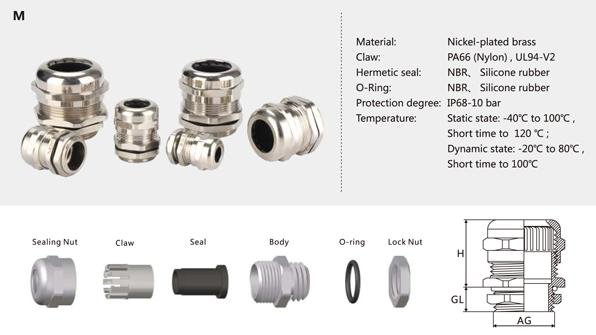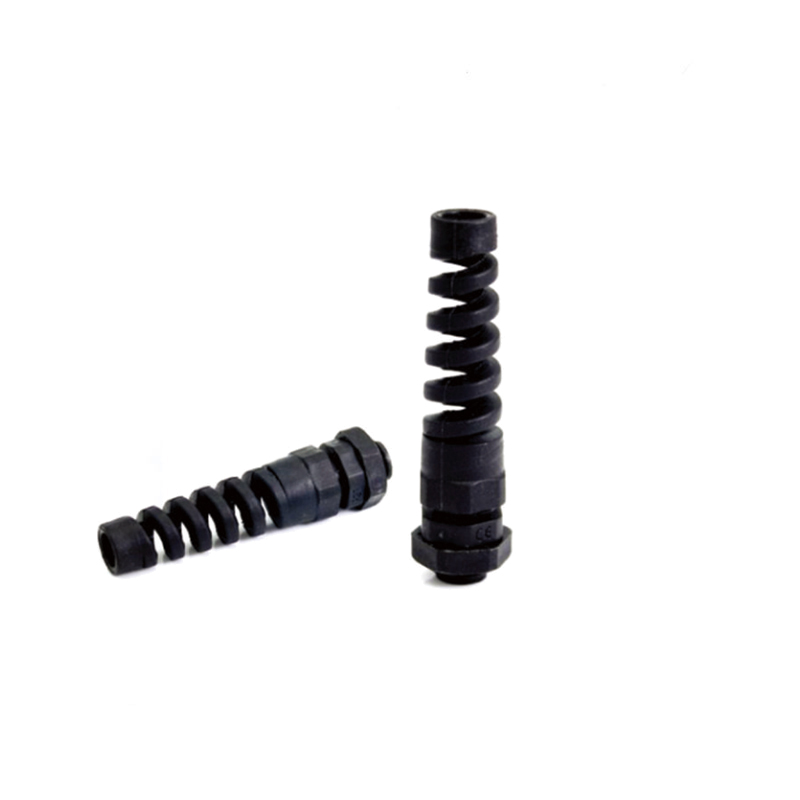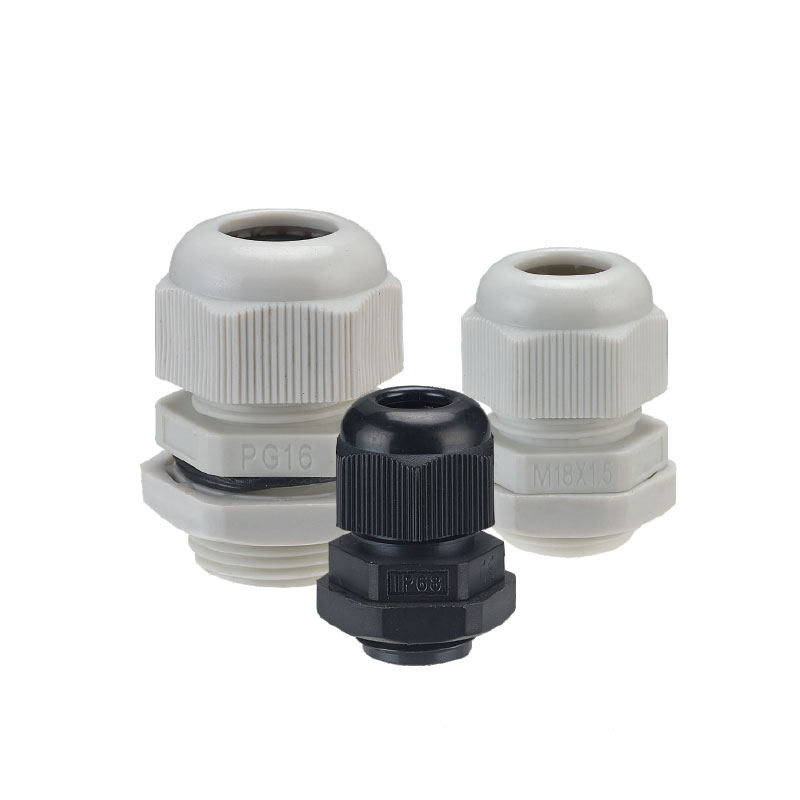
Waterproof Cable Gland Where Can They Be Used?
Have you ever wondered how electrical cables stay safe and dry even in the harshest conditions? The answer lies in an often overlooked, yet crucial component—the waterproof cable gland. These small but mighty fittings protect cables from water, dust, and other external elements, ensuring the reliability and safety of electrical systems across various industries.
Whether you’re running an industrial plant, managing outdoor lighting systems, or working in marine environments, waterproof cable glands are your unsung heroes. This blog will take you on a deep dive into the environments where waterproof cable glands shine the most. Plus, we’ll explore their materials, why the right seal is so important, and how to install them properly in challenging settings like chemical plants. Stick around for a handy FAQ section that answers all your burning questions!
How Waterproof Cable Glands Work and Their Protection Levels
First off, let’s unpack what makes a waterproof cable gland, well, waterproof! Cable glands serve as the entry and exit points for cables into equipment, effectively sealing the point where a cable passes through a panel or enclosure.
IP Protection Ratings
The key to waterproofing lies in their IP rating, which detail how well the gland keeps out dust and water. Here’s a quick rundown of common ratings you’ll encounter:
| IP Rating | Dust Protection | Water Protection | Typical Usage |
|---|---|---|---|
| IP66 | Dust-tight | Protected against powerful jets | Outdoor lighting, industrial machinery |
| IP67 | Dust-tight | Protected against temporary immersion | Marine applications, communication enclosures |
| IP68 | Dust-tight | Protected against continuous immersion | Submarine cables, underwater sensors |
Designed with sealing rings and compression components, waterproof cable glands clamp tightly around the cable, creating a barrier against moisture and dust.
The Importance of Sealing Materials and Material Choice
Now, you might be asking: Does the choice of material really matter? Absolutely! The seal is the heart of waterproofing performance.
Common Sealing Materials
- Rubber (EPDM): Excellent for weather resistance and flexibility.
- Neoprene: Great for oil and chemical resistance.
- Nitrile (Buna-N): Good for oil and fuel resistance, popular in automotive industries.
- Silicone: Outstanding at extremely high and low temperatures.
Cable Gland Body Materials
Choosing the right gland material can be a game changer, especially in tough environments. Here’s a look at common materials:
| Material | Properties | Best Applications |
|---|---|---|
| Nylon (Polyamide) | Lightweight, cost-effective, corrosion-resistant | General industrial, indoor/outdoor |
| Brass | Strong, corrosion-resistant, great for high-pressure applications | Marine, chemical plants |
| Stainless Steel | High corrosion resistance, durable | Offshore, chemical, extreme environments |
Why Does Material Choice Matter?
Simply put, different environments throw different challenges at cable glands. For instance, a gland made of nylon might fare well outdoors but could degrade quickly in a chemical plant due to exposure to corrosive substances. On the other hand, stainless steel glands provide robust resistance against saltwater corrosion but come with a higher price tag.
The best approach? Match the seal and housing materials with your specific operational risks. This choice determines how long your cables stay protected and your system stays operational.

If you’re curious about the waterproof cable gland for your application, don’t hesitate to send an inquiry — we’re happy to help you find the perfect fit!
Major Environments for Waterproof Cable Gland
Waterproof cable glands play a vital role across many industries, protecting electrical connections from water, dust, and harsh conditions. Let’s take a closer look at where these unsung heroes truly shine—and how they keep the power flowing safely.
🏭 Industrial Automation
In factories and automated production lines, waterproof cable glands are everywhere—from machinery to sensors and control panels. These environments often involve:
- Exposure to oils, dust, and water sprays
- Vibrations and mechanical stress
- Temperature fluctuations
The cable glands provide a secure seal that prevents moisture ingress and dust contamination, ensuring smooth machine operation with minimal downtime. Industries such as automotive manufacturing, food processing, and electronics assembly rely on their robust performance.
🌊 Marine and Offshore Applications
The salty sea air and constant exposure to water are a recipe for corrosion. Waterproof cable glands made from marine-grade brass or stainless steel provide:
- Outstanding resistance to saltwater corrosion
- Reliable sealing against waves and constant spray
- Durability for underwater cables and offshore wind farms
These glands ensure that electrical systems on boats, oil rigs, and offshore platforms keep working safely despite the harsh marine environment.
📡 Telecommunications and Networking
Outdoor telecom cabinets and network towers face relentless weather conditions—rain, dust storms, and extreme temperatures. Waterproof cable glands:
- Protect sensitive data and power cables
- Maintain connectivity by preventing moisture damage
- Ensure long-term reliability for 24/7 communications
🌞 Renewable Energy Systems
In wind turbines and solar energy setups, cable glands protect the vital connections that keep the clean energy flowing. They need to:
- Resist UV radiation from constant sun exposure
- Withstand rain, dust, and debris
- Sustain performance over many years with minimal maintenance
🏗️ Construction and Outdoor Lighting
From streetlights to security cameras, these systems must operate flawlessly outdoors. Waterproof cable glands:
- Seal cable entrances against rain, snow, and pollution
- Prevent insects and dirt from compromising connections
- Enhance safety by reducing electrical faults
🏥 Medical and Cleanroom Equipment
Hospitals and labs require cables that do not allow contamination. Waterproof glands:
- Provide airtight seals that keep out moisture and particles
- Support sensitive equipment in wet or sterile environments
- Guarantee safety and compliance with strict health standards
🚋 Transportation Infrastructure
Railways, traffic lights, and signaling systems experience constant vibration, weather exposure, and dust. Cable glands:
- Secure cables against mechanical stress
- Maintain waterproofing to prevent short circuits
- Operate reliably under temperature extremes
🌾 Agricultural and Irrigation Systems
Electric cables in farming face exposure to soil moisture, fertilizers, and pesticides. Waterproof cable glands:
- Ensure cable safety in wet soil and irrigation canals
- Resist chemical corrosion from fertilizers
- Help maintain stable electrical supply for pumps and sensors
🧪 Chemical Plant Corrosive Environments
Chemical plants are one of the toughest places for electrical hardware. Here, waterproof cable glands must:
| Installation Tips for Chemical Plants | Why It Matters |
|---|---|
| Use stainless steel or brass glands | Resist harsh chemical corrosion |
| Choose seals made from chemically resistant materials (neoprene, nitrile) | Maintain integrity under exposure |
| Avoid overtightening during installation | Prevent seal damage and leaks |
| Conduct regular inspections and replacements | Ensure ongoing safety and compliance |
These precautions help maintain electrical safety in environments with acids, alkalis, and solvents.
🥶 Extreme Climate Conditions
From arctic chills to desert heat, waterproof cable glands must handle wide temperature swings:
- Silicone seals maintain flexibility in cold
- Stainless steel bodies resist thermal expansion and contraction
- Glands designed for temperature resilience reduce maintenance calls
Using waterproof cable glands tailored to your environment ensures your electrical systems are safe and efficient. Curious which type fits your project? Reach out and let us guide you to the perfect solution!
Waterproof cable gland are crucial for keeping electrical connections safe and dry in a variety of environments. Their effectiveness hinges on choosing the right protection rating, sealing material, and body material. From industrial automation to chemical plants and marine settings, waterproof cable glands stand guard to provide peace of mind.
Is your project exposed to moisture, dust, or corrosive substances? Selecting the proper waterproof cable gland can prevent costly downtime and maintain safety. Don’t wait until a problem occurs—reach out today for tailored advice and quality waterproof cable glands that fit your needs perfectly.
FAQ
How do I choose the right protection level for my cable gland?
Consider the environment’s exposure to dust and water. If cables face heavy rain or temporary submersion, IP67 or IP68 glands are ideal. Light rain or dust exposure may only require IP66.
What materials are best for corrosive environments?
Stainless steel or brass glands with nitrile or neoprene seals work best in chemical plants or marine environments due to their resistance to corrosion and chemicals.
How can I ensure my cable gland is installed correctly?
Proper installation involves cleaning the cable, choosing the right size gland, tightening per manufacturer specs, and inspecting seals regularly.
What is the difference between a waterproof and an explosion-proof gland?
Explosion-proof glands are designed to safely contain electrical sparks and prevent ignition in hazardous environments, whereas waterproof glands primarily protect against water and dust ingress.
Can waterproof cable glands be used with any cable size?
Glands come in a variety of sizes and are often adjustable. Always select a gland that tightly fits the cable diameter to ensure effective sealing.
How do I verify if a cable gland is IP68 certified?
Look for manufacturer certifications and test reports showing compliance with IP68 standards for dust-tightness and water immersion.








